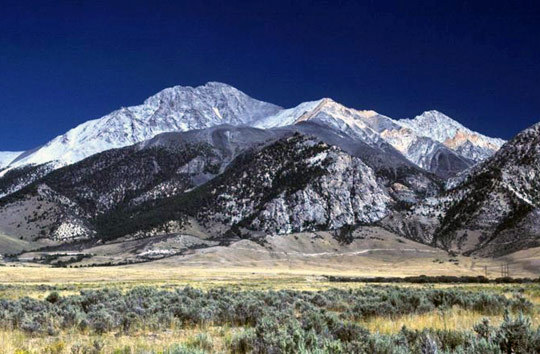
Mt. Borah, Lost River Range, Idaho. The peak houses excellent limestone cliffs and spires; the future of this wilderness area, and many others, will be decided by legislators re-examining land use plans that affect roadless areas. [Photo] G Thomas
After April 7, 2008, the state of Idaho will make important land use decisions that will determine the future of its 9.3 million acres of roadless areas. Land designated as a roadless area is National Forest land protected from development in that no roads can be built on it. These areas contain land that is used for many outdoor recreation activities and include climbing areas such as Mt. Borah.
In 2001 The US Forest Service established the Roadless Area Conservation Rule that prohibited road construction and timber cutting on 30 percent of National Forest land in thirty-nine states. The rule was met by opposition from the timber industry but was upheld in the Ninth Circuit Court of Appeals.
In 2005 the Bush administration repealed the Roadless Rule and gave the power of decision making regarding land use to individual states. There is now a process in place that allows for the possibility of states to develop many of the roadless areas through action of state governors.
The first state to re-examine its land use plans in these areas is Idaho, which contains the most roadless acreage of any state. Of particular concern to climbers is the future of Mt. Borah in the Lost River Range, Idaho’s highest peak that contains limestone cliffs and spires in a grand wilderness setting.
“Part of the appeal of Mt. Borah is the process of accessing the climbing,” said Scott Meissner, a local climber. “You are in such a remote area that once you are there you feel very alone. It would be a real tragedy to lose this essential aspect of the backcountry experience.”
This area is also home to bighorn sheep, antelope, elk, and cougar. Idaho roadless areas make up the heart of the last intact forest ecosystem in the lower forty-eight states.
The Forest Service is accepting comments about land use in Idaho until April 7th. Any opinions and suggestions can be directed toward Bradley Gilbert via email.